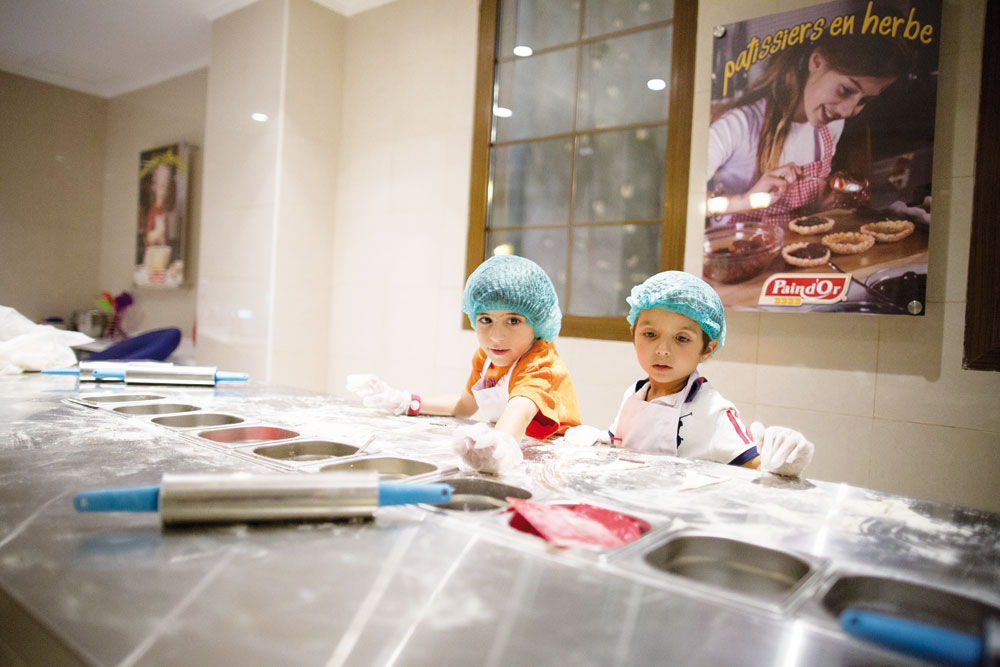Company: Cardio Diagnostics
Country: Lebanon/United States
Industry: Medical Technology
Co-Founders: Ziad Sankari and Najwa Sahmarani
Established in: 2011
Number of Employees: 11
Revenues: Product yet to be launched, expectation of “several million” dollars in coming years
Capital raised: $500,000 investment from Berytech for an undisclosed amount of equity
Ziad Sankari was just 17 years old when he lost his father to a heart condition, but it proved a pivotal moment in his development. “It shaped my studies and focus throughout my education years,” he says.
During his undergraduate years in Lebanon he worked on developing heart products before, with the support of a Fulbright Scholarship, embarking on graduate studies in the United States — researching new technology for heart treatment. The result is Cardio Diagnostics, a supplier of medical devices that monitor a person's heart condition.
Despite the fact that the company has yet launched a product, it has been attracting serious interest. On Wednesday the Lebanese startup incubator Berytech announced that it had bought an undeclared amount of equity for $500,000. Sankari said he had interest from a number of parties but had chosen Berytech because of the other support they offer. “Berytech brought in venture capital in the true form of the word,” he said.
So far the company has two main products that are in the advanced stages before entering the market, the LifeSense Arrhythmia and the LifeSense Ischemia. The former helps doctors diagnose and treat patients who may have arrhythmia, an irregular heartbeat, while the latter monitors patients with Coronary Artery Disease (CAD) or ischemia in order to detect signs of a heart attack.
The arrhythmia device will come first, due to enter the market early in 2014. Although some arrhythmias are barely noticeable, others can result in sudden arrhythmia death syndrome (SADS), resulting in death if not dealt with in a matter of minutes. Over 4,000 people die per year from the disease in the US alone, according to the SADS Foundation.
The key thing for sufferers is to get treatment immediately if they suffer an attack. As such they need constant monitoring of their heart. Cardio Diagnostic’s product is smaller than a mobile phone, and takes signals from three patches attached to the patient’s chest. If their heart is behaving abnormally, the data is automatically transferred to a monitoring center where further analysis can take place. If the collapse is severe, the patient’s location is recorded and emergency assistance is sent.
Sankari points out that the medical device complies with the “global standards of healthcare” and that it has been approved by the US Food and Drug Administration, a regulatory agency.
There are other services on the market for arrhythmia sufferers, but Sankari says his is both easier and cheaper. “The alternatives today are called an ultra monitor [which] costs around $200 [per week], or [full-time monitoring] in a cardio care unit at $800 per day,” he says. “We’re offering two weeks of monitoring for close to $300.”
Additionally, since arrhythmias can occur irregularly, the device is useful because it conducts long-term monitoring, picking up signs that can help diagnose and treat the condition.
Although most of the company’s staff is located in Lebanon, its manufacturer is in the US. Sankari describes how the company uses “Lebanon as the hub of talents and logistics,” and then sends their creations and designs to the US for manufacturing.
The company will be starting a small-scale launch later this month, testing out the product in four of Lebanon’s “top hospitals,” Sankari says, declining to name them. Subsequently, they will use that feedback to improve, before a large-scale launch in the US.
As the product is still in the testing phase, the company has yet to have any revenues at all. But Sankari predicts the company’s revenue over the next couple of years will be “several million dollars.”
And he has set his sights higher than merely dealing with arrhythmia and is hoping to deal with Coronary Artery Disease – the most common type of heart attacks – as well. That’s the hope for the current prototype of the LifeSense Ischemia, which will enable people to identify the warning signs of an attack. This product, he says, will be ready for testing next year.






![Thursday[12][25]](https://www.executive-magazine.com/wp-content/uploads/2014/01/Thursday1225.jpg)





![Tuesday[41]](https://www.executive-magazine.com/wp-content/uploads/2014/01/Tuesday41.jpg)




![Tuesday[40]](https://www.executive-magazine.com/wp-content/uploads/2014/01/Tuesday40.jpg)